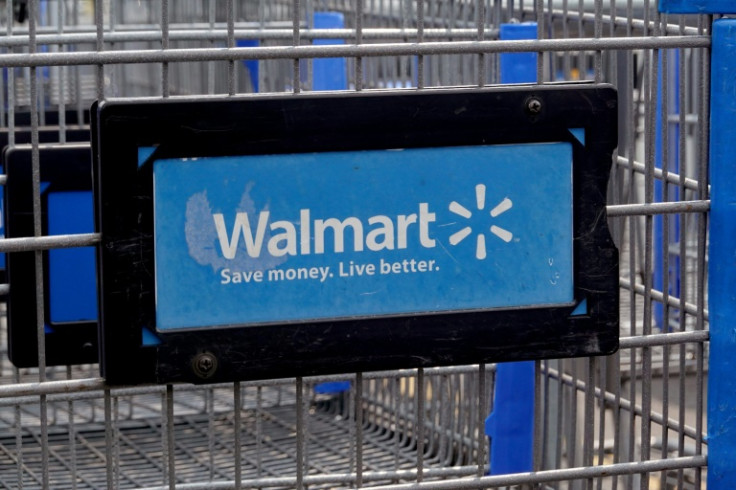Walmart Is Beginning To Look Like Amazon, Winning The War Of Unified Commerce

After years of spending on digital technologies and capabilities, Walmart is no longer the traditional brick-and-mortar retailer it used to be. Instead, it's beginning to look like its main competitor, Amazon, winning the emerging trend of unified commerce.
There was a time when Walmart's leadership was doing everything wrong.
That was over a decade ago when Amazon invaded Walmart's market and turned its extensive store network into window shopping for its customers.
In recent years, Walmart seems to be doing everything right. The retailer paid big bucks to hire top software development talent. It acquired digital properties to expand its online sales scale and scope and developed its version of Amazon's Prime program.
In addition, the retail giant launched Walmart Connect. It's a digital advertising platform that enables advertisers to access Walmart's online properties, including its website, mobile app, and other digital channels, targeting the company's large customer base.
More recently, Walmart acquired VIZIO HOLDING CORP to accelerate Walmart Connect further in the U.S.
"A Vizio acquisition brings proprietary inventory, a potential Prime-competitive option for Walmart consumers as well as relevant advertisers and advertising sales staff," Aron Bohlig, Managing Partner at ComCap, told International Business Times.
"Importantly, this immediately turns Walmart into a multi-platform network, representing third-party advertising inventory in a new way that could be extensible across Roku and other platforms. Unlike Amazon, Walmart has a differentiated in-store network and proprietary in-home advertising, making Walmart a must-have for major advertisers," Bohlig said.
Greg Silverman, Global Director of Brand Economics at Interbrand, a global branding consultancy, provides further insight into what the Vizio acquisition means for Walmart. "The recent Vizio acquisition will bolster this revenue stream beyond the traditional retail purchase cycle and create opportunities post-purchase by embedding Walmart into consumers' homes," he said.
The traditional retailer is slowly beginning to look like the online start-up that sought to take its market away.
"Yes, Walmart is starting to look more like Amazon," Michael Zakkour, a retail and eCommerce expert, told IBT. "By design. Walmart has spent the last five years building itself from a B&M to B&M plus eCommerce retailer into a complete commercial ecosystem."
Meanwhile, Walmart is capitalizing on its extensive network of brick-and-mortar stores to ride on a new trend: Unified retailing. It's the merging of online and offline sales and the integration of all channels and exchange touchpoints.
This new retailing model allows retailers to interact with customers consistently and deliver expedient, personalized, and convenient experiences, ultimately driving customer satisfaction, loyalty, and business growth.
For instance, Walmart's customers can order merchandise online and pick it up from a local company store or have it shipped to them for same-day delivery. It's something that Amazon is missing, at least in locations where it doesn't have a brick-and-mortar presence or a warehouse.
"The 'Unified Commerce' model was introduced and perfected by Alibaba between 2014-2020," Zakkour said, providing further insight into this retailing trend.
"Amazon was already an ecosystem but followed Alibaba's lead on aspects they were missing," he added.
"Walmart has added retail media, marketplaces, logistics, live streaming, and in-house tech, and with the purchase of Vizio, they have a closed loop on devices, media, content, and retail," he further said.
Walmart's catching up with Amazon in e-commerce is confirmed by a 23% rise in online sales in the fourth quarter and a 33% jump in global advertising, including a 22% rise for Walmart Connect in the United States.
In addition, consolidated revenue of $648.1 billion, up 6.0%, or 5.5%, confirms that the retail giant is the big winner of unified commerce.
"Our team delivered a great quarter, finishing off a strong year," said Doug McMillon, President and CEO of Walmart. "We crossed $100 billion in eCommerce sales and drove share gains as our customer experience metrics improved, even during our highest volume days leading up to the holidays. We're proud of the team and excited about building on our momentum as we work to bring prices down for our customers and members."
"Walmart's recent earnings reflect the results of a strengthening brand," Silverman said, elaborating on Walmart's strategy. "Most notably, the business continues to build an ecosystem that creates revenue resilience. Years ago, when Walmart had fallen behind in e-commerce, it made acquisitions such as Jet.com to bolster its online operations. The continued online growth that followed shows that they have successfully moved beyond bricks and mortar."
Walmart's success in the new retail landscape is further confirmed by the return on invested capital (ROIC). According to Gurufocus.com, Walmart's ROIC is 11.16% compared to 8.52% of Amazon's.
Wall Street has noticed. In the last two years, Walmart's shares have gained 28.73% compared to a 13.79% gain of Amazon, reversing the trend of the previous decade when Amazon's shares beat Walmart's by a considerable margin.
"I suppose Walmart was a bit late in getting into eCommerce and is still working on its digital fulfillment costs and moving towards profitability," Carol Levenson, an analyst with Gimme Credit on Walmart, told IBT.
"True, it seems to have followed Amazon in providing a paid-for membership in Walmart +, expanding its third-party marketplace, and emphasizing advertising as a growth avenue. But it has one great advantage over Amazon: its vast global network of brick-and-mortar stores, over ten thousand of them. Using these stores to enhance its digital offerings with fulfillment, pickup, and delivery has been a great advantage for Walmart," Levenson said.
(Disclosure: The author owns shares of Amazon and Walmart.)
© Copyright IBTimes 2024. All rights reserved.





















